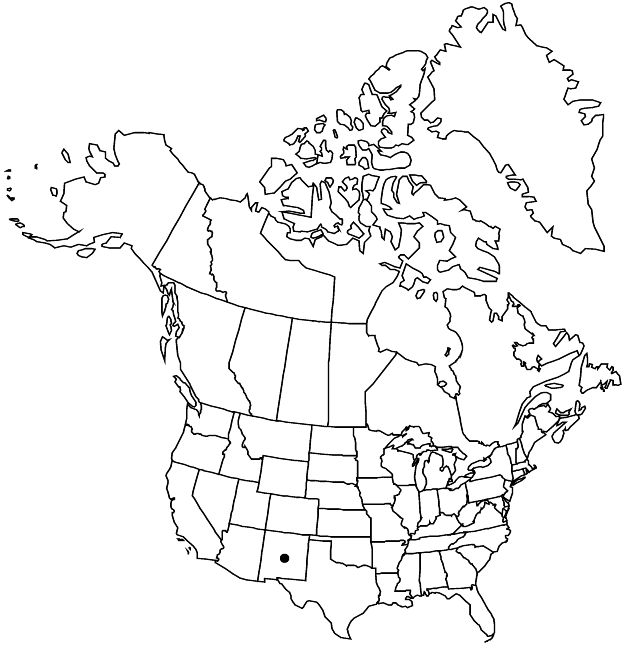Eriogonum wootonii
Harvard Pap. Bot. 9: 206. 2003.
Herbs, erect, 4–5 × 3–5 dm, tomentose to floccose. Stems: caudex absent; aerial flowering stems erect, stout, solid, not fistulose, arising directly from a taproot, 1–2.5 dm, tomentose to floccose. Leaves basal, not in rosettes; petiole 2–5 cm, tomentose to floccose; blade elliptic, (2.5–)3–6.5 × 1.5–3 cm, densely whitish- to tannish-tomentose abaxially, thinly tomentose to floccose and greenish adaxially, margins entire, plane. Inflorescences compound-umbellate, 5–15 × 5–20 cm; branches tomentose to floccose; bracts 3–6, leaflike at proximal node, 2–4(–5) × 0.7–1.8 cm, often scalelike distally. Involucres 1 per node, campanulate, 3–6 × 3–7 mm, thinly floccose; teeth 5–7, erect, 0.3–0.6 mm. Flowers 4–7(–9) mm, including 1–1.5 mm stipelike base; perianth bright yellow, densely pubescent abaxially; tepals dimorphic, those of outer whorl lanceolate to elliptic, 3–6 × 1.5–2.5, those of inner whorl elliptic, 5–9 × 2–3.5 mm; stamens exserted, 3–5 mm; filaments pilose proximally. Achenes light brown to brown, 4–8 mm, glabrous except for sparsely pubescent beak.
Phenology: Flowering Jul–Sep.
Habitat: Sandy to gravelly slopes, sagebrush communities, montane conifer woodlands
Elevation: 2000-2800 m
Discussion
Eriogonum wootonii is known only from the San Francisco Mountains of Lincoln and Otero counties in southern New Mexico. It is related to, but significantly disjunct from, E. arcuatum, and is part of a three-species complex that includes E. correllii of northern Texas and E. allenii of Virginia and West Virginia, and that skips across the central United States, the result of fragmentation associated with the southward push of Pleistocene glaciation.
Selected References
None.
